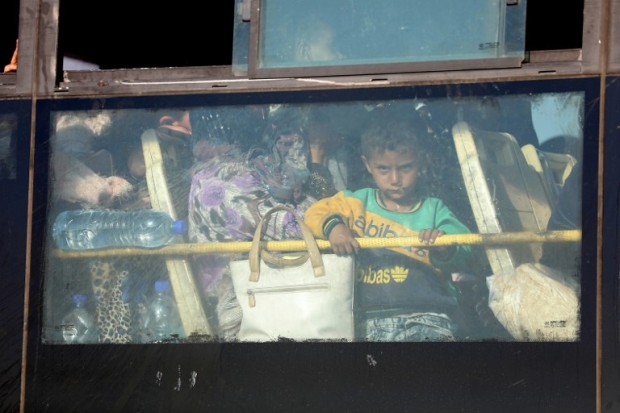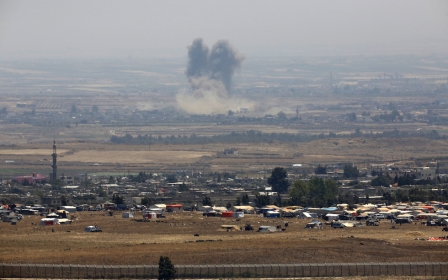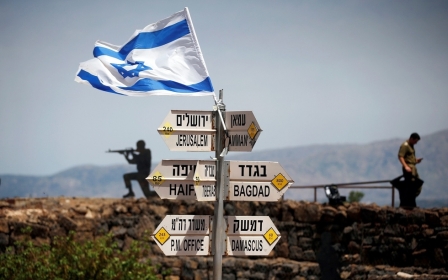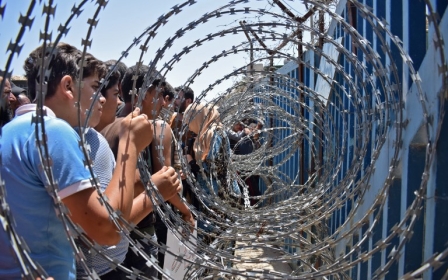Syrian army pushes into Quneitra province, nearer to Golan
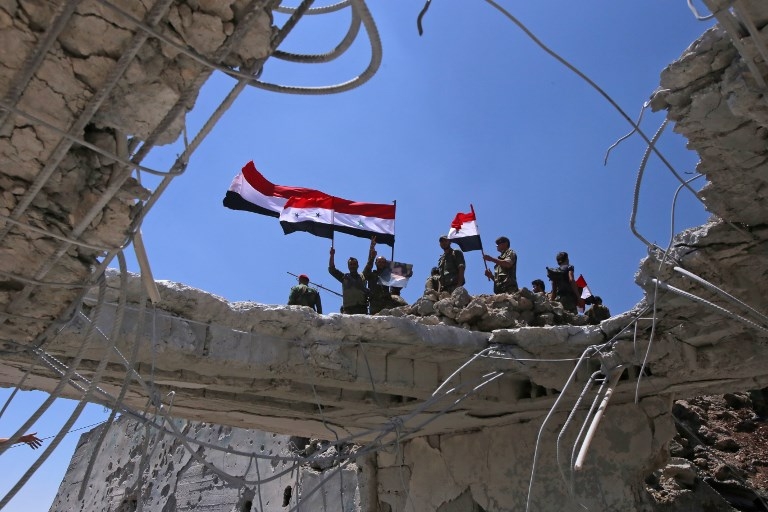
The Syrian army and allied forces made advances in the southwest that bring them closer to the Israeli-occupied Golan Heights as rebels refusing to return to state rule boarded buses for opposition controlled northern Syria, state television and rebels said.
The army, backed by a Russian air campaign, has been pushing into the edges of Quneitra province since an offensive last month that routed rebels in adjoining Daraa province who were once backed by Washington, Jordan and Gulf states.
The offensive has restored Syrian government control over a large area of the southwest, strategic territory at the borders with Jordan and Israel.
The capture of several villages, announced by the army on Saturday, came as evacuation of rebels and their families resumed for the second day from villages along the Golan frontier towards rebel-controlled northern Syria.
"We are in a bus with around 60 people, young men and families, and about to leave and become uprooted from our homes," said Maher Ali, 38, an activist who decided with his family to leave rather than risk retribution for his long record of peaceful opposition to President Bashar al-Assad's rule.
Hundreds of rebel fighters and their families had already arrived on Saturday in northwestern Syria after their evacuation from the south, an AFP correspondent said.
In the morning, a first wave of about 50 buses carrying opposition fighters and their families reached the Morek crossing on the edge of northwestern rebel-held Idlib province, an AFP correspondent at the scene said.
Near the parked buses in Morek, a woman and five children waited by a cluster of small suitcases, the eldest among them carrying bottles of water and a blanket.
Men with light weapons slung on their backs shared a bite to eat and some water as they stood around waiting. Several wore scarves wrapped around their faces.
The Syrian Observatory for Human Rights monitor said the first convoy to reach Morek transported around 2,800 people.
Air strikes by government ally Russia, meanwhile, on a southern militant holdout, killed six civilians, the monitor said.
Russian air strikes
The raids came a day after strikes in the same area took the lives of 26 non-combatants, including 11 children.
On Saturday, clashes between loyalists and militants in the area also killed 13 government fighters, including eight in a car bombing.
Meanwhile, the army was consolidating its control of a series of commanding heights that overlook the Golan frontier that had allowed mainly Islamist rebels who once controlled it a strong position in the sensitive border area.
A deal negotiated by Russian officers with rebels in the Quneitra area last week allows safe passage of rebels opposed to a return to state rule, while offering others who decide to stay Russian guarantees against army encroachments in their own localities, rebels said.
It also allows the return of Syrian army brigades that existed before the 2011 conflict back to where they were stationed near a 1974 demilitarized zone with Israel on the Golan frontier.
More than 2,500 people, among them fighters from Islamist groups who have rejected the deal, left on Friday, headed to opposition areas in northern Syria.
Russia's Interfax news agency, citing the Russian military, confirmed the same number had been taken by bus to the Idlib zone. The Syrian army wants full control over Quneitra province, where Israel has deep concerns over the presence of Iranian-backed militias in the area, which is a bastion of Iranian-backed militias including Hezbollah, according to Western intelligence sources.
Israel signalled it would not impede the Syrian army presence in Quneitra as long as it steered away from the demilitarized zone. It said it will continue to escalate attacks along its frontier and elsewhere in Syria where it suspects Iranian-backed forces are stationed.
A commander in the regional alliance that backs Assad said the army's victory in southwestern Syria forced Israel to accept the Syrian army's return to the old 1974 armistice lines.
"The Israelis has been forced into submission," the commander told Reuters, saying Quneitra's complete recapture was expected in coming days.
Some rebels say Russia, which led the military campaign and negotiated most of the surrender deals and committed military police to oversee its implementation, has been trying to push back the army and its Iranian-backed militias from committing excesses in former rebel-held towns.
Other phases of the agreement, which includes the handover of weapons and the entry of Russian military police to some villages, were expected to be implemented in the coming days, a rebel source said.
Tens of thousands of people have been sheltering at the frontier since the Russian and Syrian aerial bombing campaign that the opposition called a scorched-earth policy began a month ago.
Russia has been exerting pressure on the Syrian army to facilitate the return of many of the displaced and has also asked the United Nations to send regular convoys of aid to ease the humanitarian crisis triggered by the offensive, UN officials said.
A senior Western diplomatic source said Moscow, which has reached understandings with Israel and Jordan that made it possible to move on with the offensive, was keen to stabilise the border area to prove that its Syria intervention sought a political settlement to the seven-year-old conflict.
Middle East Eye propose une couverture et une analyse indépendantes et incomparables du Moyen-Orient, de l’Afrique du Nord et d’autres régions du monde. Pour en savoir plus sur la reprise de ce contenu et les frais qui s’appliquent, veuillez remplir ce formulaire [en anglais]. Pour en savoir plus sur MEE, cliquez ici [en anglais].


